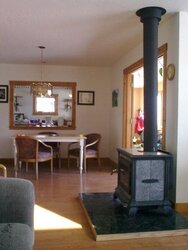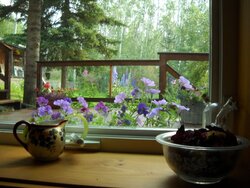- Dec 9, 2009
- 1,495
Oh gosh! That worked! Except that is not a picture of my sunroom. Those are the steps on the east side of the house. Trying again here:
East end of sunroom where Toyo would go, and hearth room at the west end of sunroom.
Thought about putting unit in hearthroom because it's centrally located, but that just seemed wrong. I was concerned about putting it in the sunroom because of the way the walls come down to meet the door frames, but the sunroom is narrow and the Toyo has a fan on it, so if I locate it so it will blow into the kitchen from the sunroom, and through the kitchen, to the base of the stairs, I think it will work just fine.
I hope.
East end of sunroom where Toyo would go, and hearth room at the west end of sunroom.
Thought about putting unit in hearthroom because it's centrally located, but that just seemed wrong. I was concerned about putting it in the sunroom because of the way the walls come down to meet the door frames, but the sunroom is narrow and the Toyo has a fan on it, so if I locate it so it will blow into the kitchen from the sunroom, and through the kitchen, to the base of the stairs, I think it will work just fine.
I hope.





